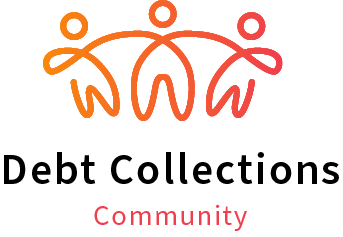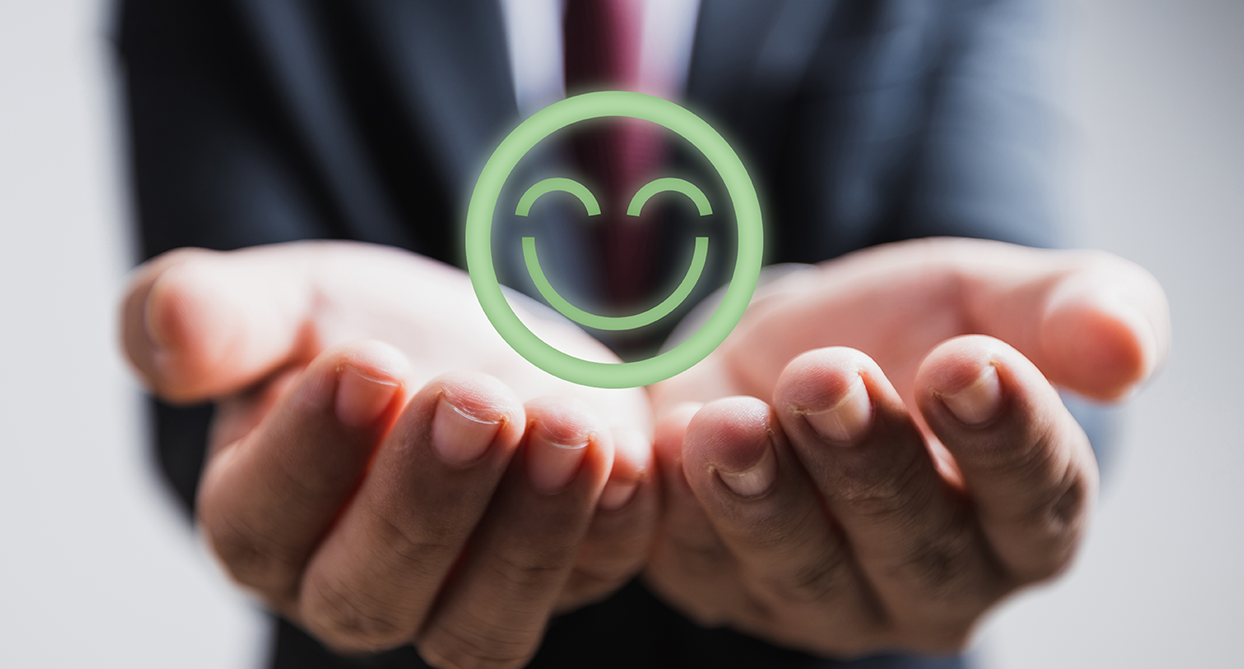The world has changed
Not more than 20 years ago, Financial Institutions were providing products and services to their customers through the traditional endpoints that we all know. For a customer to receive a loan, they had to go to a branch, make an application, come again a second time to sign the relative legal documentation, and eventually a third time to receive its financing.
Collections were a Bank-to-debtor one-way communication, through a phone call or a letter, with the bailiff waiting to take over the cases that early collections have failed to manage.
Today, credit can be acquired online, through a web application, and most probably receive an instant confirmation for its granting.
Customers do not visit a branch anymore, they bank online, through the comfort of their home, on the move, opening the app on their mobile screens.
Banking is becoming digital, with a two-fold objective:
- To reduce the overall operational costs and
- To align with the expectations of their customers


Online consumers and the new competition
Banking has changed, as Bill Gates stated back in 1994, “Banking is necessary, but banks are not”.
Fintech, technology-based financial services, provides several banking services that can compete with banks following their customers on the medias that they want, at the time that they want and through the way they want.
Modern consumers are tapped into social media and many forms of digital communication, such as SMS, email, instant messaging. When you survey the trajectory of the economy as a whole, you see that modern consumers want 24/7 convenience. They want information and choices at their fingertips. And they want to deal with companies and their representatives when it suits them.
Social platforms have become a predominant part of our life, with multi-billion daily users through-out the world. Facebook, WhatsApp, Messenger have already exceeded the billion active users around the world, while some regional platforms are getting impressive penetration rates in their markets.
As of today, more than 80% of the world population possess at least one smartphone. The average European spends 2 to 3 hours per days on their smartphone.
Customers around the world can bank on line, make their payments in a frictionless way, real-time and with a significant lower cost than before. How have those trends affected collections?
Are collections aligned with this evolution?
Think about the rest of the banking services and how people bank today. That’s because they offer customers the flexibility to do their banking on their own terms. Debt collection has been slow on the uptake.
While other areas of banking have adopted beautifully designed, user friendly apps which put the customer in control, debt collection channels are anachronistic by comparison. The process remains riddled with bureaucracy, making it difficult for people in debt to organize payments on their terms.
The cost impact is dramatic. According to CEB Tower group, the cost to service a delinquent loan is fifteen times the cost of servicing a performing loan.
And online-only credit providers have on average a close to 80% advantage compared to classic Banks when it comes to collections costs.
In our traditional collections world, the highest operational cost is represented by personnel. Large teams, necessitating significant infrastructure and heavy investments in order to support their activity. Close monitoring, intensive guidance and training are needed to set up a level of service that will be consistent, aligning with legislation and the objectives of each organization.
The human factor is also absent. Most of the problems here come because debt collections are not customer focused and ignore the characteristics and the lifestyle of those customers.
Poor contact data - we’re relying on customers to go through the old school channels.
Call center data shows that roughly 90% of all cold calls are ignored.
Letters do not reach their recipients as people change house during their lifetime. Europeans will change house on average 4 times in their lifetime, while in the US and other markets this figure can climb to 11 times in their lifetime, or once every 7 years!
Evaluating how work gets done and the efficiency of the classic arsenal we have been using can help inform your decision to add new communication channels.
You’ll need to experiment with the right mix, but the fact remains: collections can’t improve if they don’t know what they’re doing right and wrong.

The debt collections community was built for the sole purpose of connecting professionals from the debt collections industry. CROs, credit risk officers, debt collections & recovery managers, supervisors and team leaders with a minimum of 3 years of experience in managing credit risk and delinquent portfolios, within financial institutions (banks, consumer finance, microfinance, leasing, debt services/buyers, etc.), utilities, telcos , or debt collections agencies are eligible to join.
Is digital just another collections channel?
The power of technology to offer choice to consumers can be seen all throughout the economy. But what does this mean for collections communications?
Certainly, Collections departments need to be able to communicate with their customers across multiple channels. Communication success directly relies on opening up more ways your customers can be reached. You can retain professional consistency by using clearly defined tools and scripts that meet the required ethical standards.
It’s a fact that the banking industry is acutely aware of. CEB Tower Group’s discovered some years ago that only a third of retail banks surveyed believe that they have adequate collections technology.
But the issue here, is not just to open another outbound communications channel. Sending a message through a social platform will not necessarily increase the performance of collections when compared to the classical messages or letters.
Technology offers more possibilities than that. The question is not just to push messages through another channel but to use the advantages of the specific channels available in order to increase the interaction, the customer engagement and at the end point the amount collected.
Banks have done the same thing in the past with the introduction of massive tools for calls, mails, letters, that all find their efficiency decreasing with time.


Our debtors are our customers
Stop for a moment and think about debt collection from a customer perspective.
National regulations have set up limits in the time to call, number of communications that can be send to customers, a priory acceptance, in order to protect those from the excesses of the automation.
A modern approach to collections and recovery will treat the debtor as a customer, applying the same principles that banks use to streamline the user experience in other aspects of their business. Opening other touch points and increasing the interaction possibilities will be a key to increase customer’s engagement.
We live in the era of the collaborative consumer. Millennials are mobile first. They expect mobile-friendly service, as well as interfaces that allow them to proactively satisfy their own needs.
As a result, it can’t be assumed that supplying facts and rational arguments alone will persuade people to resolve their liabilities. Instead, collections strategies should be designed to reflect how people respond based on real-life, rather than theory.
We must not forget that most of them will pay - they don’t want to be in debt any more than you want them to be.
A customer focused collections strategy will treat him as an equal, understand his economic motivations, empower his with choices and opportunities to express his needs and can dos.
However, everything is not suitable to all.
Integrating channels in a strategy
It all starts with the strategy.
Best practice here starts with understanding the phases of delinquency: soft, pre-litigation, litigation and recovery and specifics of communication at each phase.
During the first phases, the emphasis is on helping the customer find a solution. The assumption here is that the customer wants to pay but is having trouble; you’re looking to accommodate their needs in order to keep them on your side, minimizing the number of cases that move on to the later stages. The approach is customer first-thinking, focused heavily on asking questions, providing tools and services, taking out the need for stressful and intimidating personal contact.
At all phases centralized communication scripts must be tailored to your organization’s specific business goals, but also to the particular customers that you addressing yourself to.
The usage of Big Data permits you to better understand the profiles of the customers that you are facing at, to specialize the message and the mean to better communicate in order to reach them how they want, through the platform that they prefer and at the time that is convenient for them.
The overall strategy will have to be articulated in a way that reduces customer friction, proposes solutions that are valid for each, open opportunities for communication and interaction.
Agent to consumer communications are not to be banned – and cannot be avoided in all cases, but should be used when other soft and self-servicing means have failed, or when the customer requests so. Cost wise, direct outbound communications are also the most expensive ones, so for every customer that will be engaging himself through self-servicing and use of interactive channels communications with his Bank, the Bank will be reducing the cost of collections. Your objective is that your debtors will remain your customers.


Digital-first communications
Reaching customers through messaging (SMS and emails) has already been achieved some years ago. The efficiency of these channels remains low as is their cost.
With the new generation of collections systems and communications tools, messaging has lost his one-way aspect and can become much more interactive. Utilizing multi-channel communication systems ensure that you provide all types of communication channels to customers. Some prefer to read a sort message, while others prefer listening to their options.
We do no longer communicate to a debtor his status, he probably already knows it before receiving the message. We seek to increase his engagement and establish an interaction.
Voice messages, much like text messages can be used as a touch point to remind consumers on payments missed, or ask them to contact an agent or check their emails.
Sending a message that permits a response, give to your debtor the opportunity to inform you on how and when we will regularize his position.
Indicating alternatives for a payment, or providing channels for communication in response to your message, empowers the debtor and makes him feel that we are all on the same side.
But these tools do not permit to explore the full potential of the digital channels as action does not come in a continuity with the message. They may resolve the mass issue, maintaining a low cost, but they lack in complexity and in the possibilities that they can offer.
Portals – maximizing interaction and end results
Portals empower users through offering flexible and intuitive user interface (UI) with visual graphical tools. And for the banks and institutions utilizing them, they offer numerous advantages.
They can stretch from very small to very wide, support a full range of collections and recovery operations, offer diversified and on the same time personalized options to your debtors.
The beauty of a self-service portal is that it can be drafted in with minimum fuss, sitting on top of your existing employee and technological resources. And once it tethers itself to your existing systems, you can begin squeezing your data for the insights you need.
Consider the following questions:
- can you discuss over the phone with your debtor a complex repayment scheme?
- do you believe that your agents will communicate with all customers in the same unified way that you have to?
- how can you learn what is your customer’s real situation and design a repayment plan that fits him?
A self-service portal offered a way to resolve these issues by turning customers into collaborators. Instead of ineffective phone calls, the self-service portal makes the recovery process start with the customer himself.
Through his smartphone, tablet or PC, at his pace and at the time that suits him, he will be ale to give you the responses that you are looking for.
At the end of the day, it is a win-win situation, creating a positive experience for your customer, diminishing friction and achieving a better end result.
